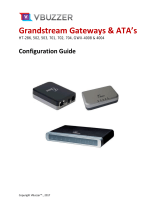
4
Table of Contents
Chapter 1................................................................................................ 6
Introduction............................................................................................ 6
Overview............................................................................................................................6
Package Content...............................................................................................................7
Physical Details.................................................................................................................7
Front Panel Indicators.................................................................................................8
Rear Panel Indicators..................................................................................................8
Chapter 2 Preparations & Installation................................................ 10
Physical Installation Requirement................................................................................10
Network Interface quick configurations...................................................................11
RS-232 Console Port Configuration.........................................................................14
Chapter 3 IP PBX Setup ...................................................................... 16
SIP Basic Setting.............................................................................................................16
User Extensions Setup..............................................................................................19
Trunk Management – SIP Trunk ..............................................................................20
Trunk Management – FXO Trunk............................................................................22
Trunk Management – Gateway Trunk......................................................................24
Trunk Management – Trunk Group..........................................................................24
Trunk Management – Dialing Rules.........................................................................26
Attendant Management.............................................................................................30
Attendant Message ...................................................................................................31
Attendant Time.........................................................................................................32
Record Auto Attendant .............................................................................................33
Upload Voice File.....................................................................................................34
Call Parking..............................................................................................................34
Gereral Setting..........................................................................................................35
Hunt Group Setting...................................................................................................37
Chapter 4 Network Setup.................................................................... 40
WAN & LAN Setup........................................................................................................40
DHCP .......................................................................................................................45
Static Route...............................................................................................................47
NAT ..........................................................................................................................47
Packet Filter..............................................................................................................51
URL Filter.................................................................................................................52
Security.....................................................................................................................53
UPnP.........................................................................................................................54
DDNS .......................................................................................................................54
SNMP .......................................................................................................................55






















